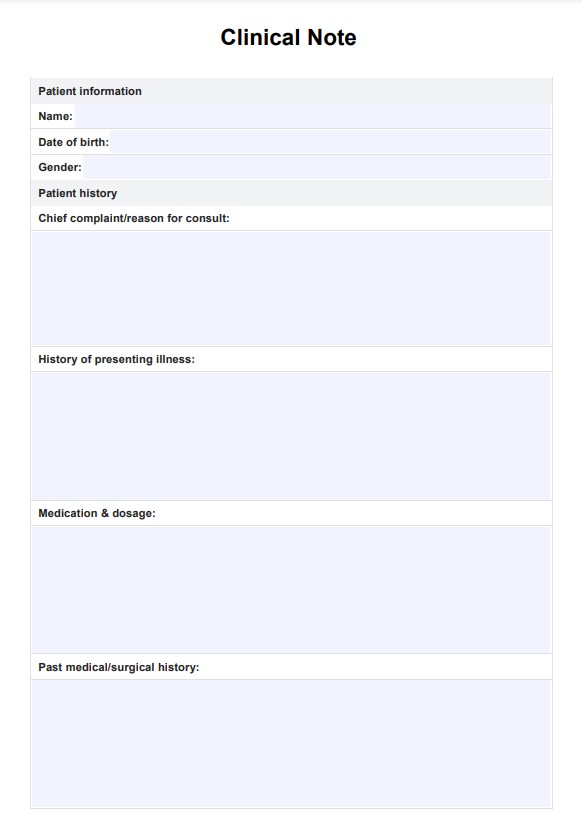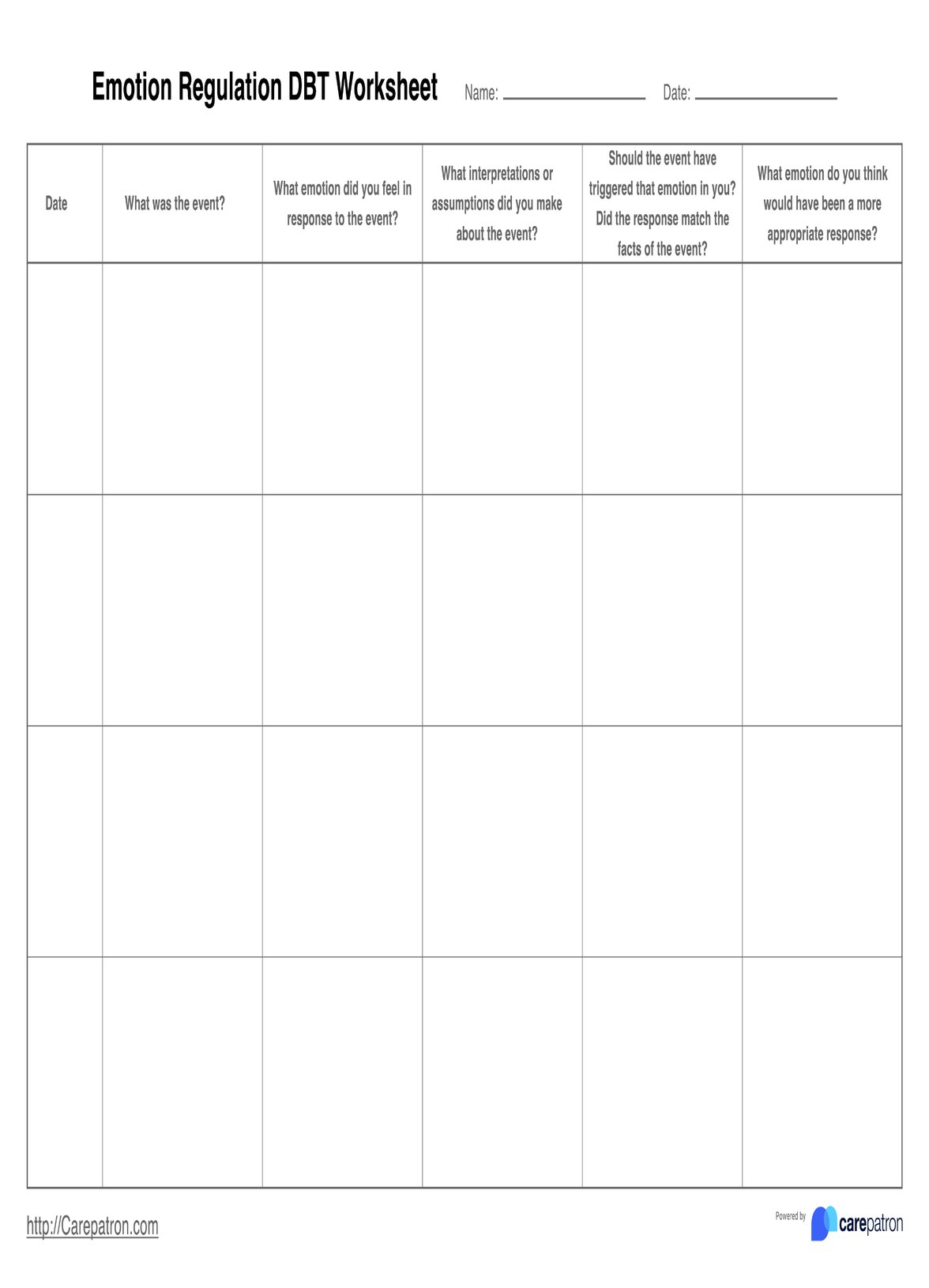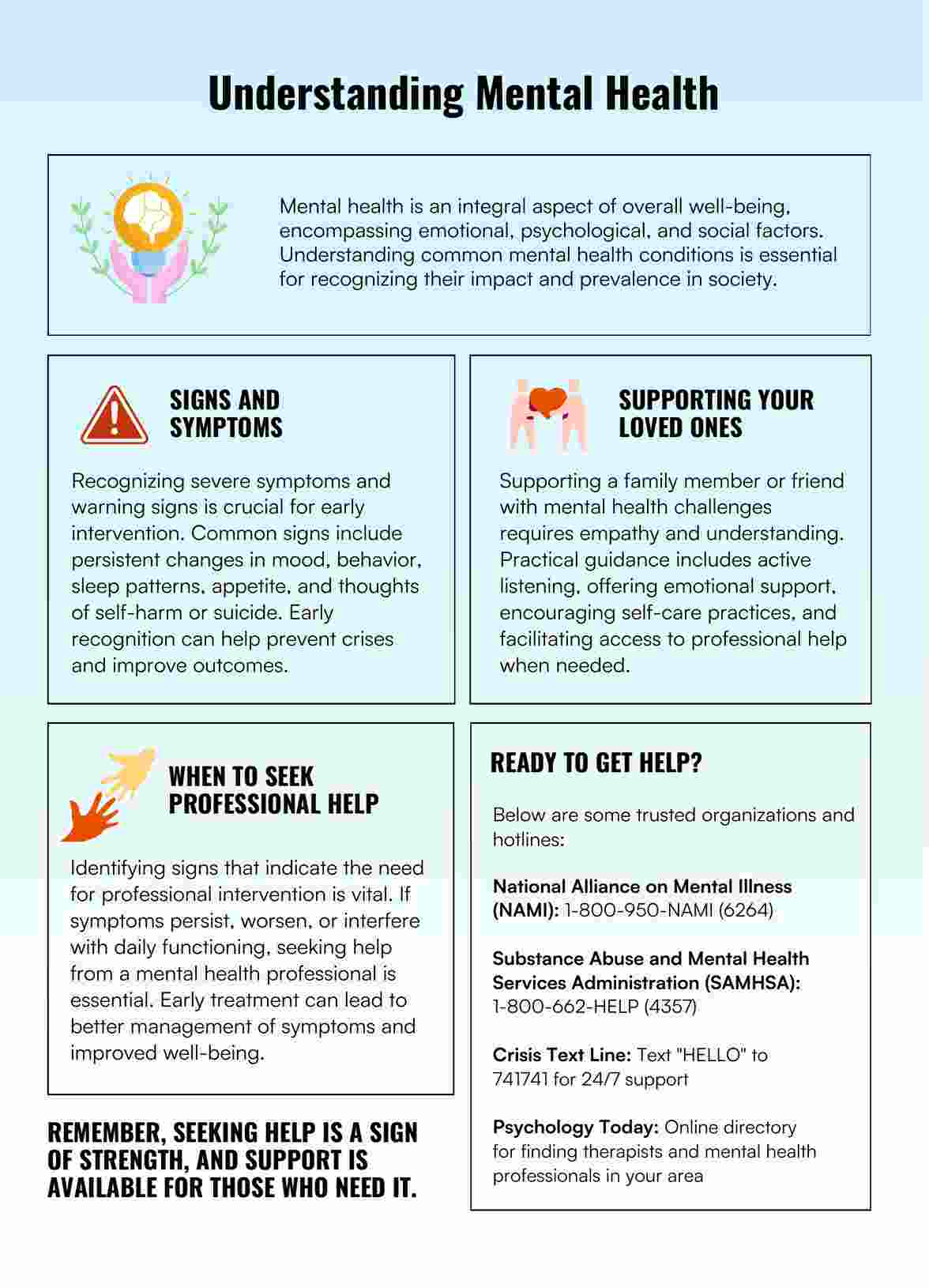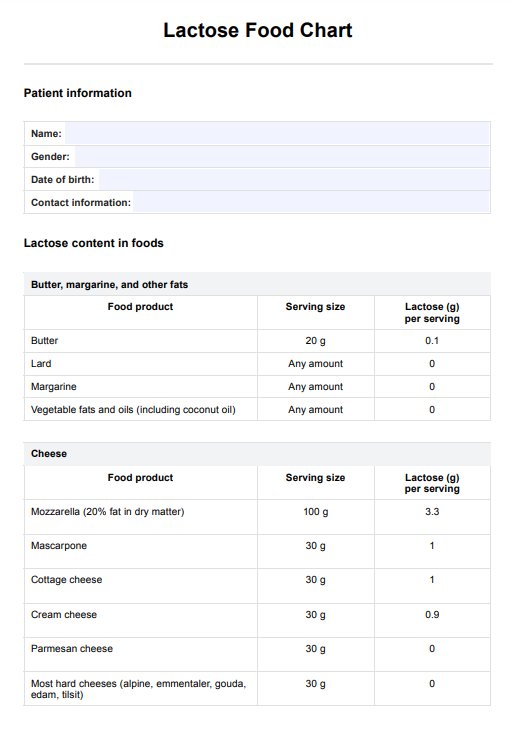Sleep Diary
Discover our full guide on Sleep Diaries, a crucial tool for healthcare pros in managing & understanding patients' sleep patterns. Get a free PDF template!


What Is a Sleep Diary?
Welcome, healthcare professionals! As someone in the field, you are likely well-versed in the significance of quality sleep for overall health and well-being. However, tracking sleep patterns and behaviors can be a challenging task. That's where a sleep diary comes into play!
A sleep diary, a sleep log or journal, is a helpful tool allowing individuals to record their sleep habits. This valuable resource provides detailed insights into a person's sleep patterns, such as when they go to bed, how long it takes them to fall asleep, the number of awakenings during the night, and their feelings of refreshment upon waking.
By diligently tracking these sleep parameters over time, it's possible to identify any potential issues or irregularities that could indicate sleep disorders, stress, or other health concerns. These insights can guide targeted interventions and contribute to more effective, personalized patient care.
Moreover, a sleep diary can be a fantastic educational resource. It's a tangible reminder of sleep's vital role in our lives, encouraging individuals to prioritize this fundamental aspect of their health.
Now, wouldn't it be great if we told you that we'd designed an intuitive and easy-to-use sleep diary that you can download for free? Stick with us, and we'll guide you through how to use this resource best to aid your practice. Let's unlock better sleep health together!
Sleep Diary Template
Sleep Diary Example
How Does It Work?
A sleep diary can provide valuable insights into an individual's sleeping patterns and habits. This simple yet effective tool involves a step-by-step process for healthcare professionals to follow:
Step 1: Explanation
Start by explaining to the patient what a sleep diary is and how it can help identify sleep disorders or unhealthy sleep patterns. Emphasize the importance of accuracy in their entries.
Step 2: Provide the Sleep Diary
Hand over the sleep diary to your patient. Ensure they understand all the sections and what they should record under each one.
Step 3: Record Keeping
Instruct your patient to keep the diary by their bedside and fill it out every morning upon waking. Stress the importance of documenting every day, even if their sleep was poor or if they didn't sleep at all.
Step 4: Monitor
Ask your patient to bring the diary to each appointment. This allows you to monitor progress, understand their sleep patterns, and make recommendations based on recorded data.
Step 5: Analysis and Recommendations
Finally, after a suitable period, analyze the information in the sleep diary. Use it to pinpoint specific issues and create a treatment plan if necessary. Provide the patient with feedback and actionable steps to improve their sleep.
Remember, the effectiveness of a sleep diary relies on the consistency and accuracy of the patient's input. As a healthcare professional, encourage patients to take this exercise seriously, as it is integral to understanding and managing their sleep health.
When Would You Use This Template?
The Sleep Diary template is an invaluable tool for various professionals within the healthcare field, and its use can be particularly beneficial in several situations:
- Identifying Sleep Patterns: Therapists, psychologists, and sleep specialists can use this Sleep Diary to help patients document their sleep patterns over a specified period. This information is crucial in identifying irregularities or patient sleep cycle issues.
- Diagnosis and Treatment: Medical professionals can use this template when a patient presents symptoms of sleep disorders, such as insomnia, sleep apnea, or narcolepsy. The detailed information in the diary can assist in diagnosing these conditions and in formulating a treatment plan.
- Mental Health Assessment: Mental health professionals can use the Sleep Diary as part of a holistic approach to patient care. Sleep patterns are often disrupted in conditions like depression, anxiety, and bipolar disorder. Monitoring sleep can provide valuable insight into a patient's mental health and guide treatment strategies.
- Health and Wellness Coaching: Coaches focusing on lifestyle changes, stress management, or wellness can use this template to help clients understand the impact of their daily habits on their sleep. It can guide discussions on adjusting routines for better sleep hygiene and overall health.
In conclusion, the Sleep Diary is a versatile tool used across various healthcare practices. Its primary function is to collect detailed data on a person's sleep patterns, which can lead to insights that guide effective treatment and interventions for better sleep health.
You can leverage a sleep log template and diary template to gain insights into clients' sleeping habits and daily routines. These tools assist in creating tailored interventions to improve sleep and enhance daily functioning.
Benefits of Using the Free Sleep Diary
The Free Sleep Diary offers an array of benefits to both healthcare professionals and patients, including:
In-depth Sleep Analysis
The diary allows for comprehensive monitoring of a patient's sleep patterns. This analysis can lead to a better understanding of sleep quality and issues affecting sleep.
Easy Accessibility
Being a free resource, it removes cost barriers, making it accessible to everyone.
Facilitates Communication
The Sleep Diary is a communication tool between the patient and healthcare professional, promoting in-depth discussions about sleep habits.
Basis for Tailored Interventions
The detailed diary can guide healthcare professionals in creating individualized treatment plans.
Encourages Accountability
Regularly filling out the Sleep Diary can help patients become more aware of their sleep patterns and habits, promoting better sleep hygiene.
Research Supported
The Sleep Diary is backed by numerous studies, establishing it as a reliable tool in sleep health.
Research & Evidence
The practice of using Sleep Diaries for assessing sleep patterns and disorders has been long established, dating back to the early 20th century when sleep researchers first developed it to monitor sleep behaviors outside the confines of a lab setting.
Decades of research and clinical practice have affirmed the value of Sleep Diaries. For example, a 2012 study published in "Sleep" demonstrated that self-monitored sleep diaries provide a standardized, valid, and reliable data collection method that compares favorably with advanced technological approaches like actigraphy (Carney et al., 2012).
The American Academy of Sleep Medicine recommends using sleep diaries as part of cognitive-behavioral therapy for insomnia. These diaries grant critical insight into a patient's sleep habits, proving instrumental in shaping effective treatment strategies (American Academy of Sleep Medicine, 2014).
In addition, a wealth of studies has underscored the importance of Sleep Diaries in managing various sleep disorders, including sleep apnea, circadian rhythm sleep disorders, and parasomnias (Harvey & Tang, 2012; Lichstein et al., 2006). Across these studies, the consensus is clear: Sleep Diaries are a reliable, economical tool integral to sleep health management.
Indeed, the enduring presence of Sleep Diaries in sleep medicine, underpinned by substantial research, speaks volumes about their credibility and efficacy in assessing and treating sleep health.
References
- Carney, C. E., Buysse, D. J., Ancoli-Israel, S., Edinger, J. D., Krystal, A. D., Lichstein, K. L., & Morin, C. M. (2012). The consensus sleep diary: standardizing prospective sleep self-monitoring. Sleep, 35(2), 287–302. https://doi.org/10.5665/sleep.1642
- American Academy of Sleep Medicine. (2014). The AASM Manual for the Scoring of Sleep and Associated Events. American Academy of Sleep Medicine. https://aasm.org/clinical-resources/scoring-manual/
- Morin, C. M., Belleville, G., Bélanger, L., & Ivers, H. (2011). The Insomnia Severity Index: psychometric indicators to detect insomnia cases and evaluate treatment response. Sleep, 34(5), 601–608. https://doi.org/10.1093/sleep/34.5.601
- Harvey, A. G., & Tang, N. K. (2012). (Mis)perception of sleep in insomnia: a puzzle and a resolution. Psychological bulletin, 138(1), 77–101. https://doi.org/10.1037/a0025730
- Lichstein, K. L., Stone, K. C., Donaldson, J., Nau, S. D., Soeffing, J. P., Murray, D., ... & Aguillard, R. N. (2006). Actigraphy validation with insomnia. Sleep, 29(2), 232–239. https://doi.org/10.1093/sleep/29.2.232
Commonly asked questions
Absolutely! Sleep Diaries are valuable tools for monitoring a variety of sleep disorders, including sleep apnea, circadian rhythm disorders, and parasomnias. The detailed insight it provides can help shape effective treatment strategies.
It's recommended that patients keep a Sleep Diary for at least two weeks. This period allows you to observe any patterns or issues with their sleep that may not be evident in a shorter period.
Yes, the Sleep Diary can be used alongside other sleep assessment tools like actigraphy or polysomnography. It provides a subjective perspective that complements the objective data from these devices.


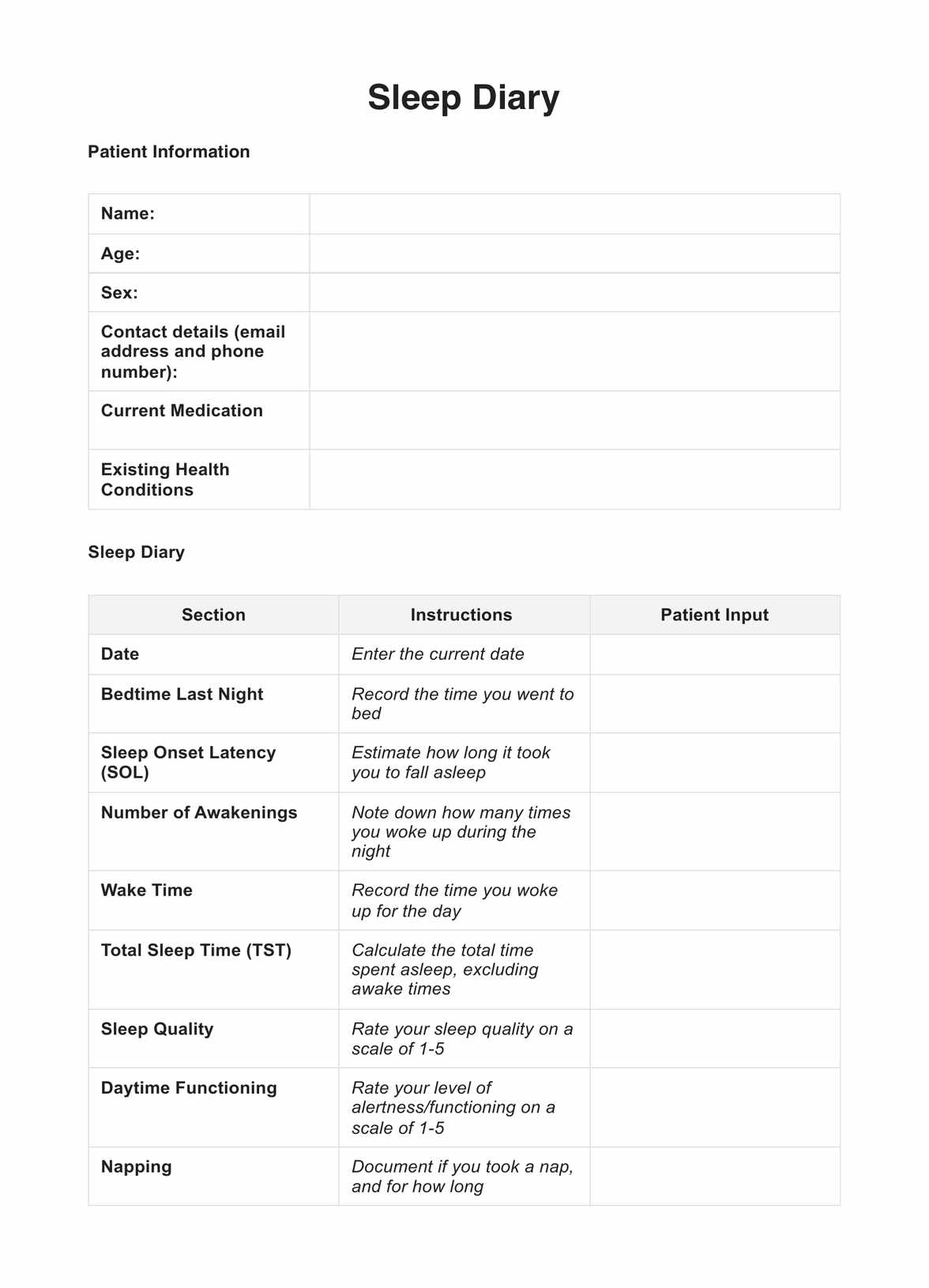
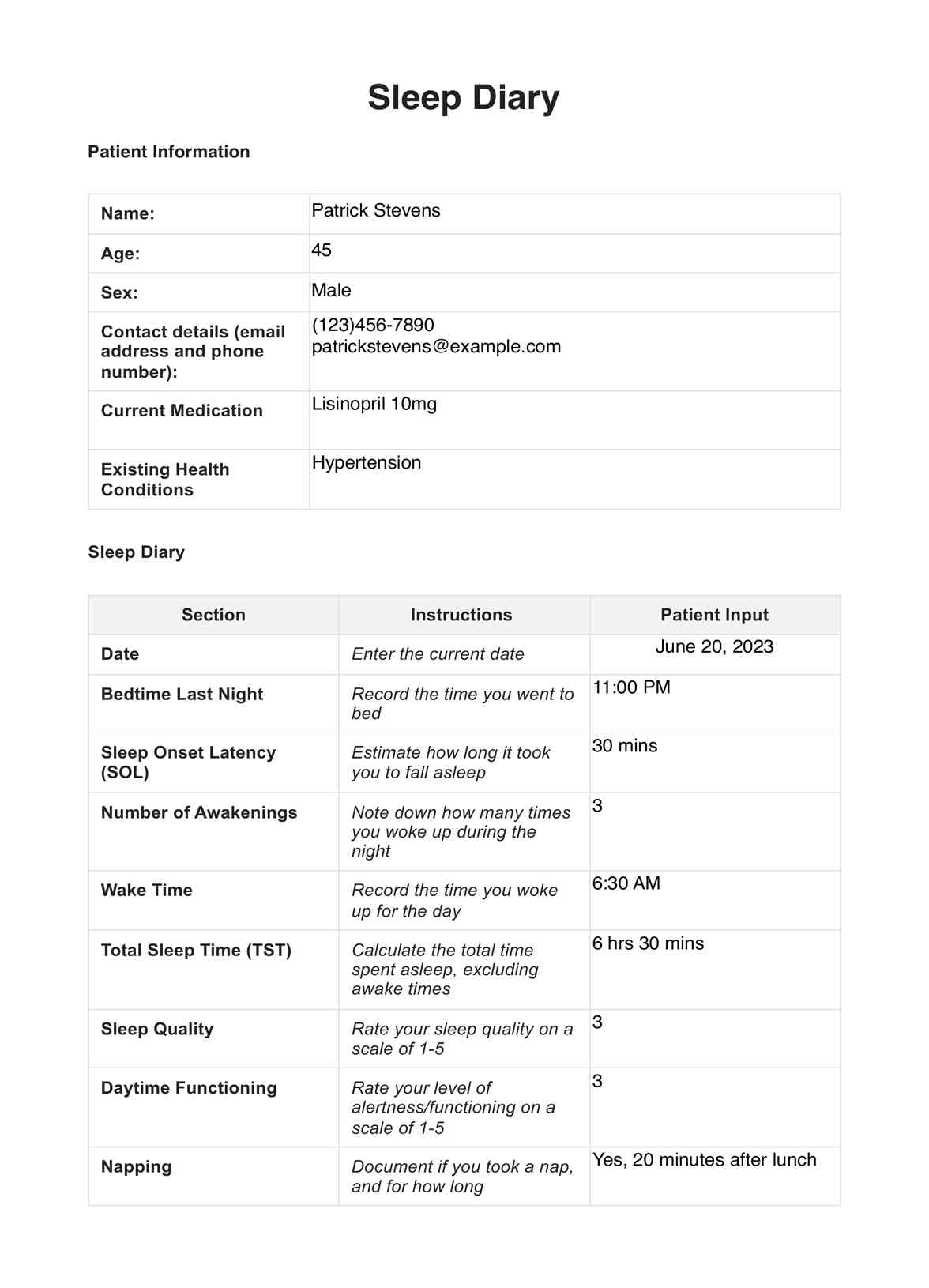

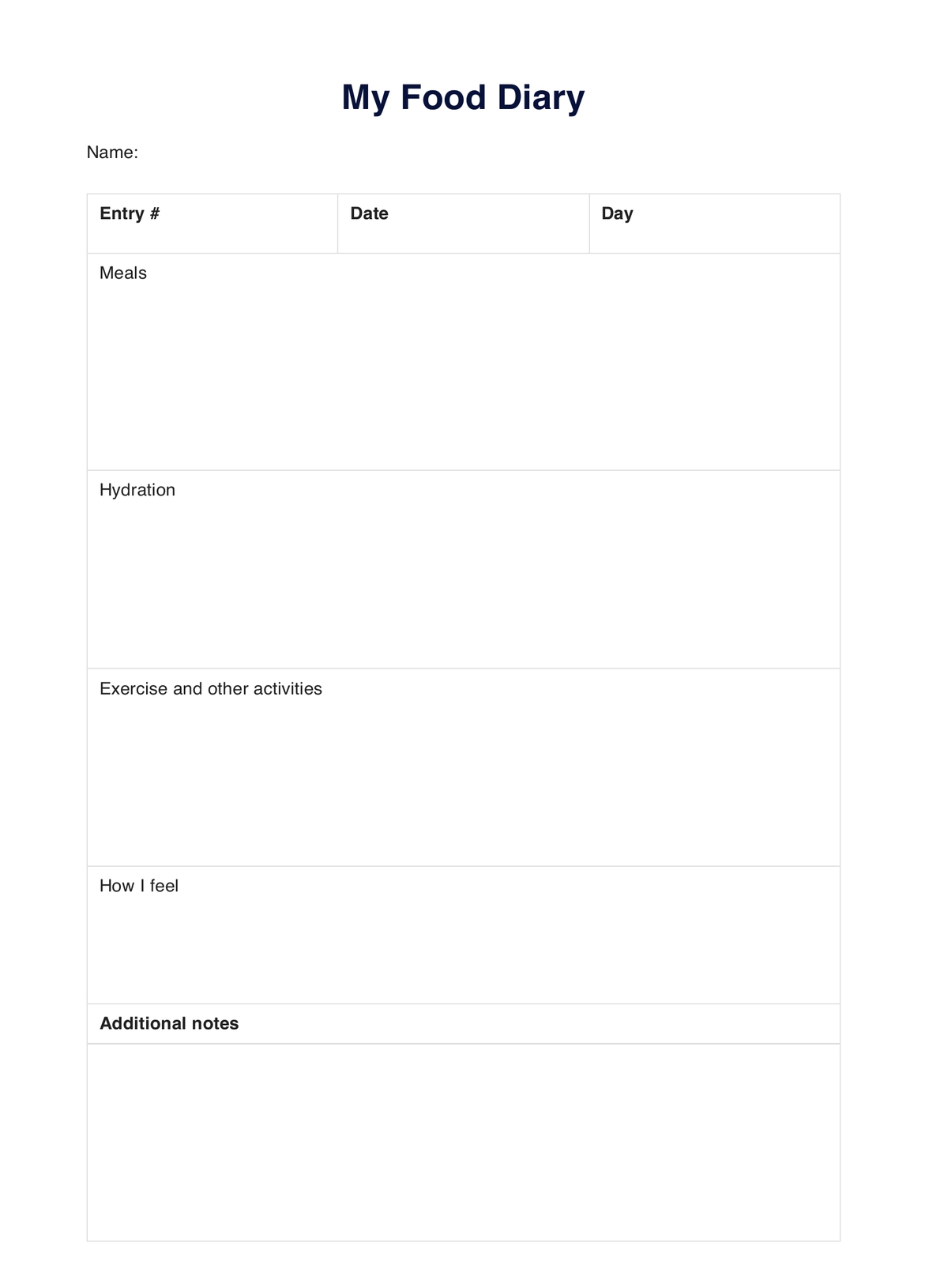
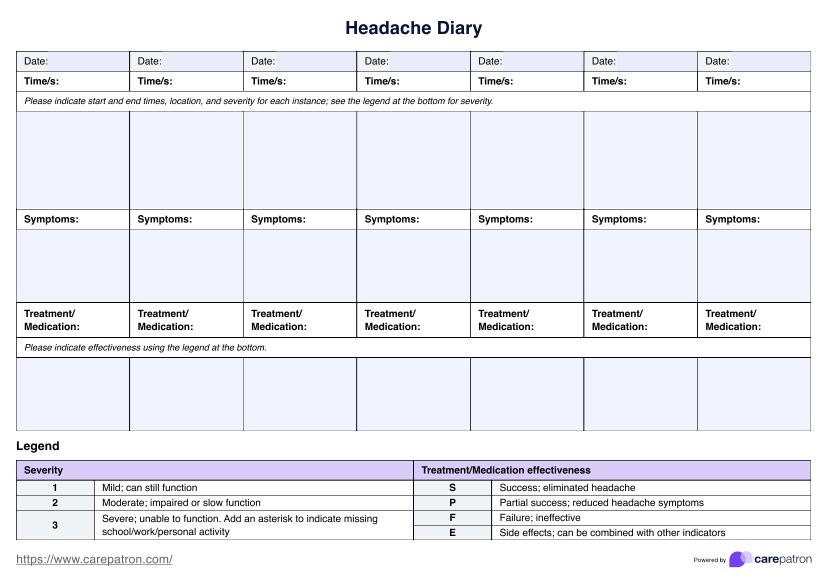
















-template.jpg)


















































































